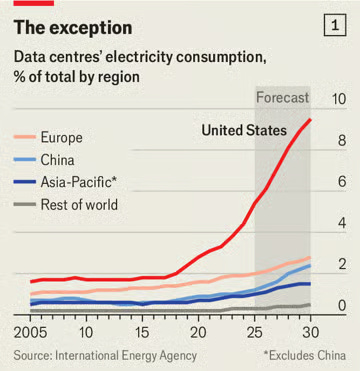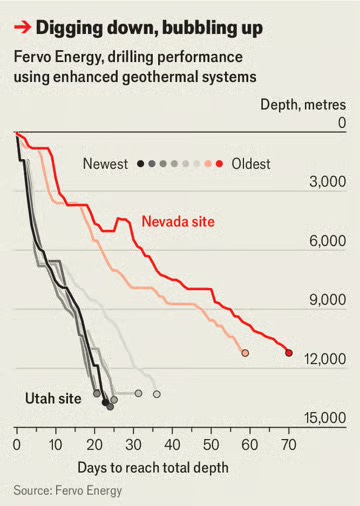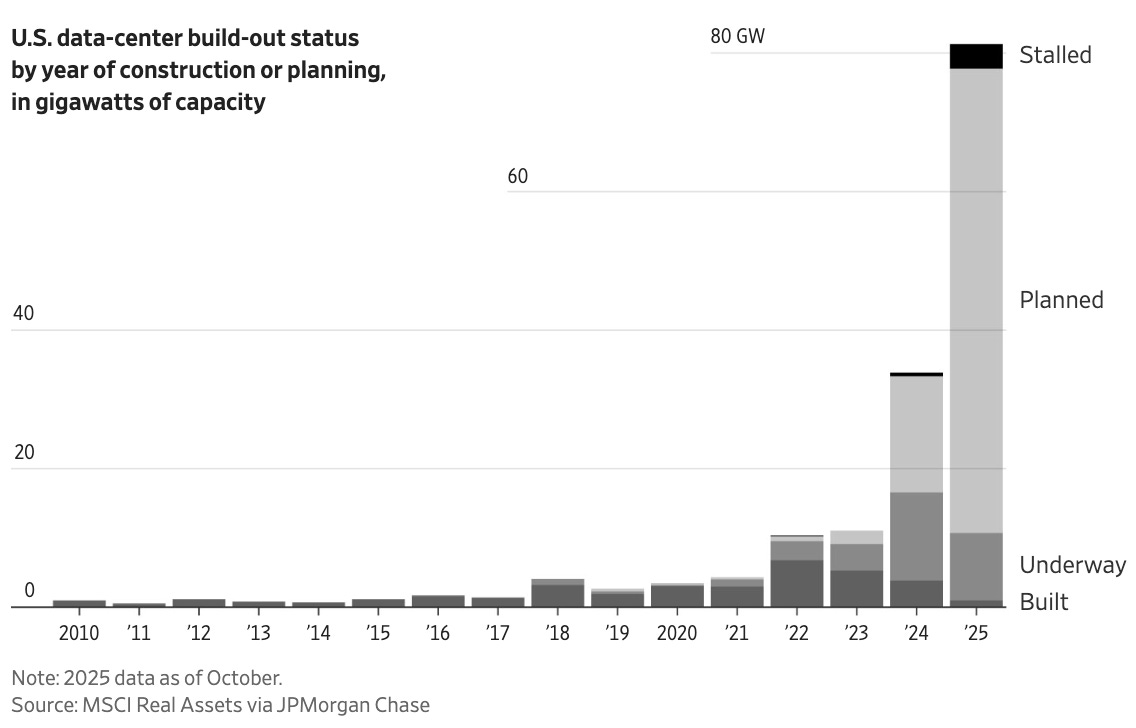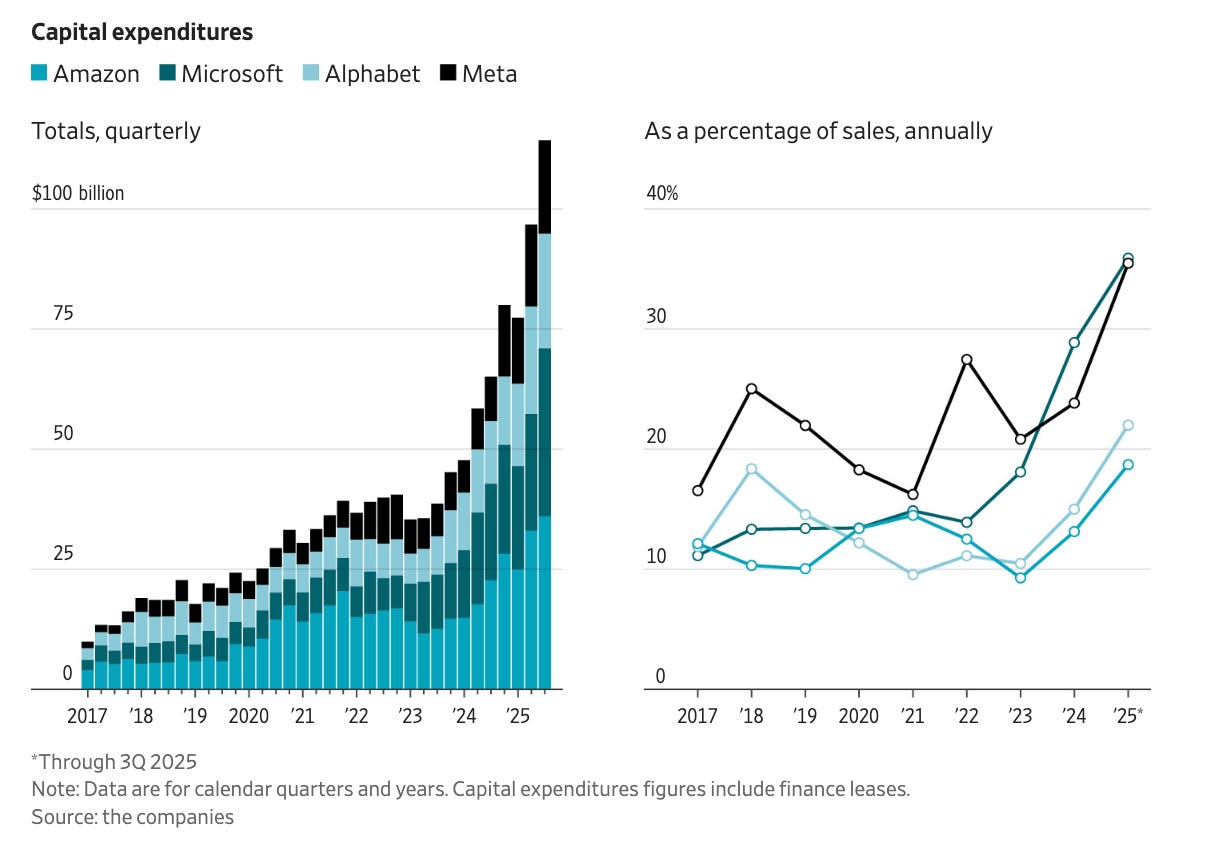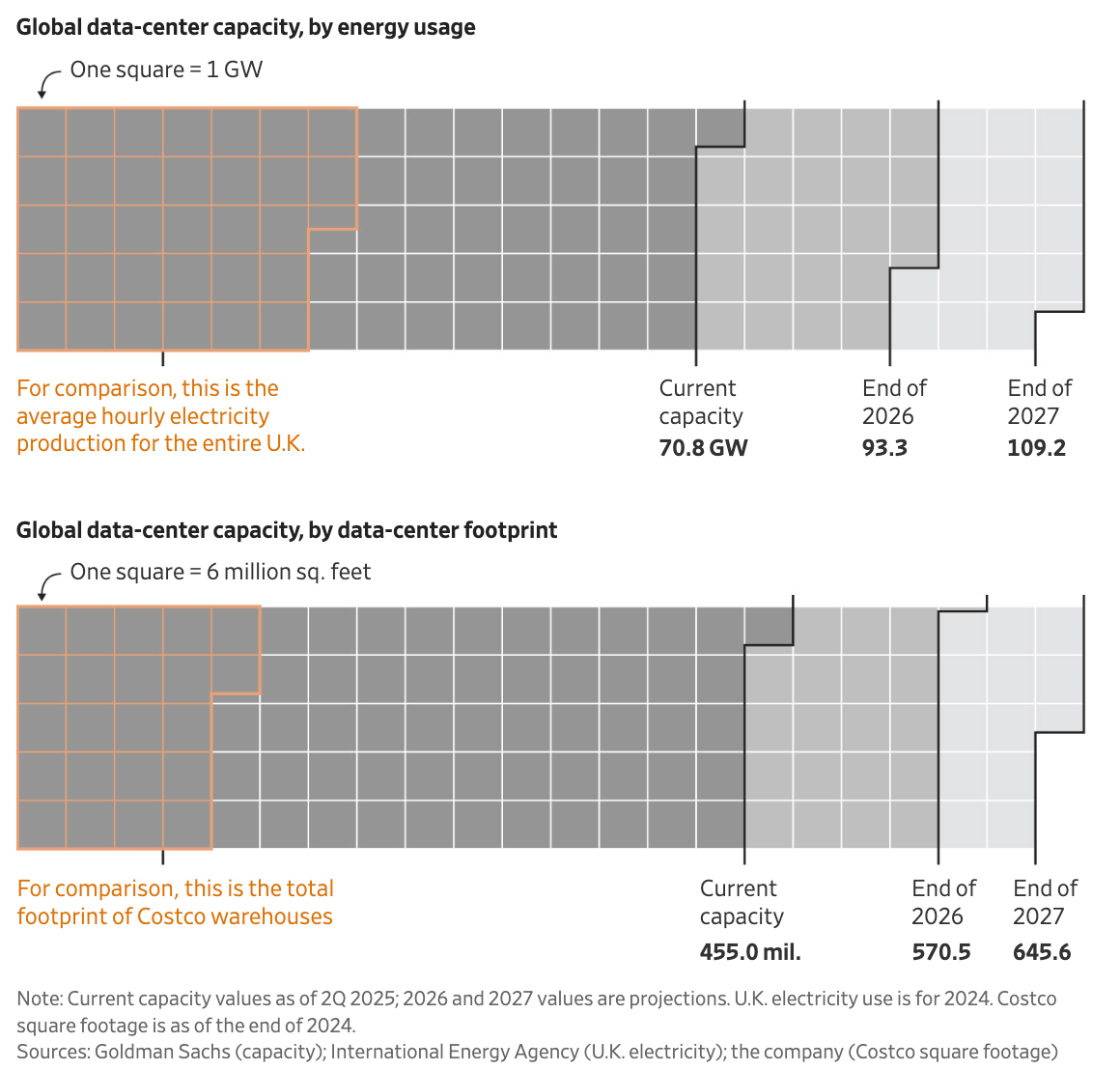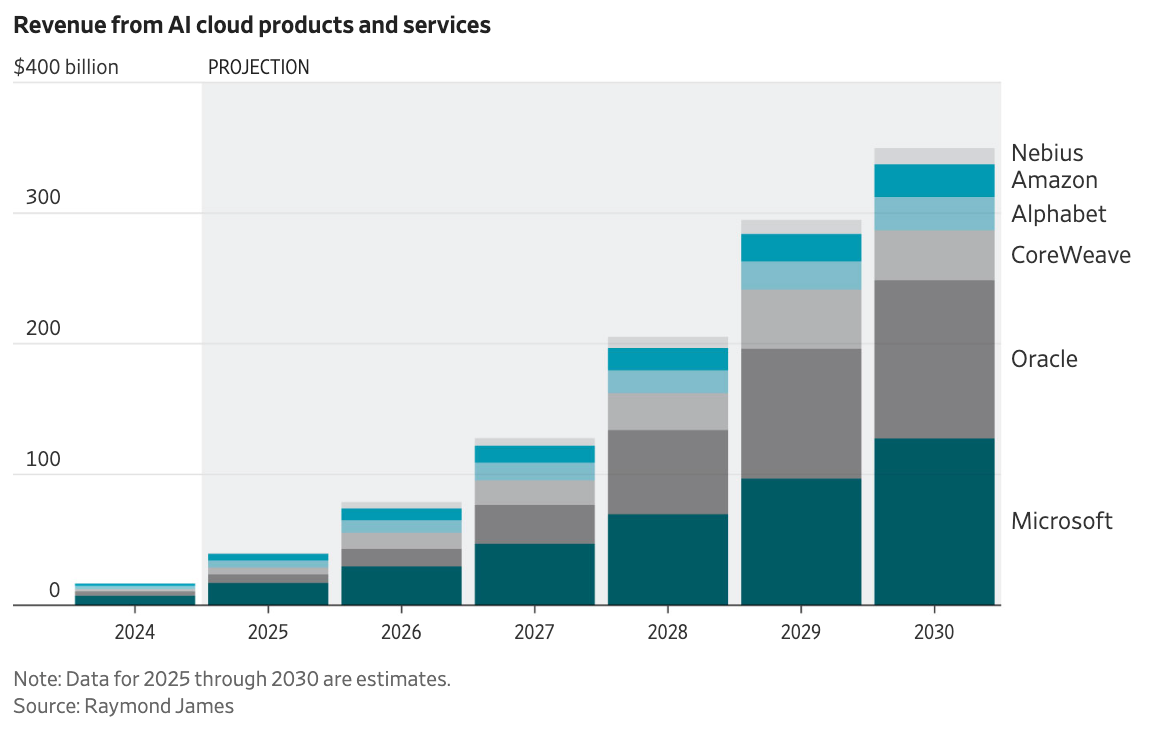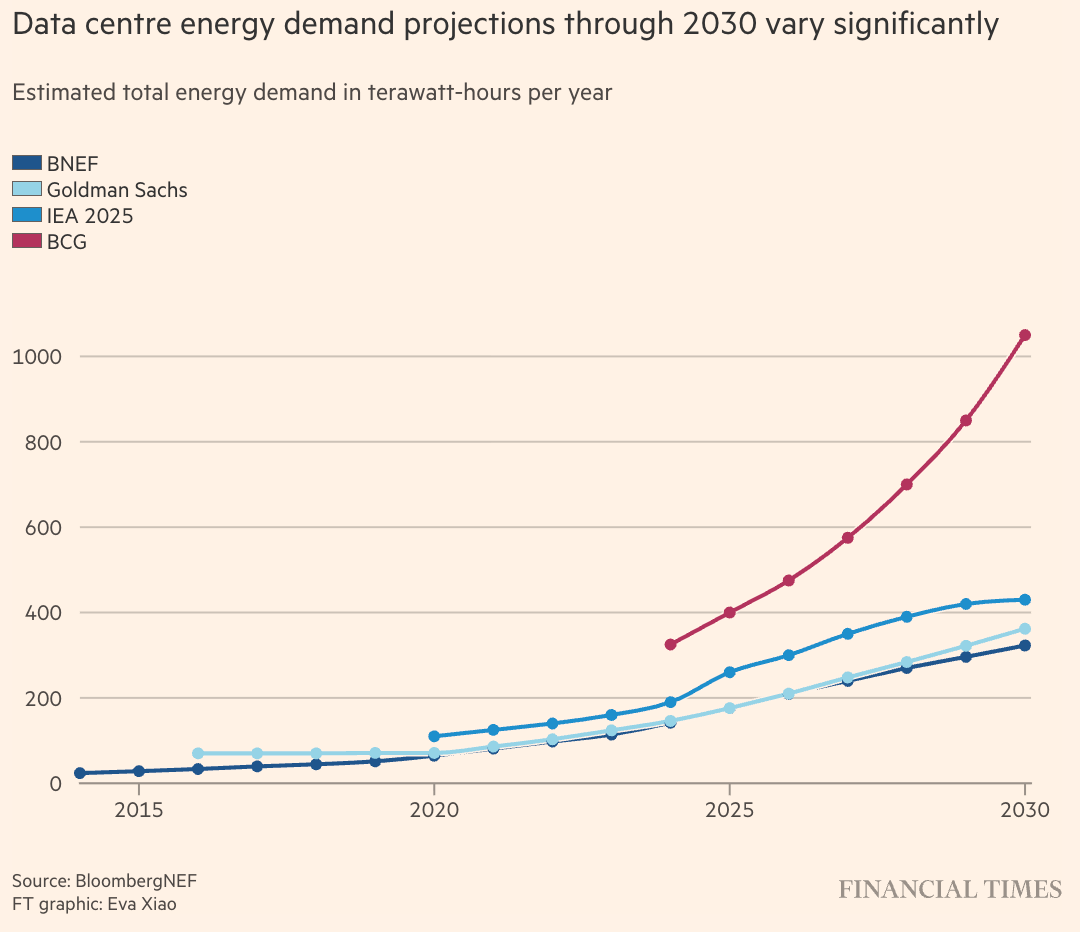The AI Phantom Menace? - Reading & Podcast Picks - Nov. 18th 2025
This week’s reporting highlights rising load, local pushback, new firm power options, and the supply chain decisions that will shape the next decade.
Every week the energy world moves faster than most people realize. Markets shift, new tech gets tested, rules change, and communities respond. Some stories make headlines, others sit buried in trade press, but they all shape the work happening in the field.
Project Vanguard tracks these developments through a simple lens. What helps us keep the lights on. What keeps energy affordable for families and businesses. What strengthens American competitiveness. Veterans understand that mission clarity matters, and these updates help cut through the noise so we can focus on results.
Below are the stories that stood out this week. They show where the pressure is building, where momentum is growing, and where leadership is needed. If you see something we should add, reply or share it with us.
1. The Flexibility Question Isn’t Settled Yet - Bloomberg
Bloomberg highlights the tension at the center of the Big Load Era. On one hand, PJM’s market monitor argues that banking on flexible data-center load is unrealistic:
“The assertion that large new data center loads can be demand-side resources … is a regulatory fiction.”
They point out that hyperscalers typically require “99.999% electricity reliability”, which leaves little room for curtailment when the grid is stressed.
But here’s the other side of the field. Flexibility is not optional for the next decade. If big loads cannot shift, the grid will lean harder on new gas, more wires, and more capacity payments. That means higher bills, slower permitting, and more political backlash. Everyone loses.
My take: Innovation needs a fair shot. Companies like EmeraldAI and others trying to build real, verifiable curtailment tools are aiming to solve a problem the grid cannot outrun with concrete alone. If flexibility is impossible, we have a reliability and affordability problem. If it’s achievable, even partially, it changes the entire load equation.
This piece sets up the stakes for the rest of the week’s stories.
We need firm power and new capacity, but we also need smarter load or the math breaks fast.
2. America’s Data Center Backlash Is Brewing - The Economist
The Economist shows how fast the ground is shifting in places where data centers once sailed through approvals. Georgia is the clearest example.
“Fields are dotted with building sites. That has brought the state something else new: the politics of the data-centre boom.”
Local leaders who once welcomed tech investment are hitting pause.
“A clutch of counties around Atlanta have paused new data-centre approvals… it was rare to hear a single pro-data-centre voice in favour during town-hall meetings.”
The article highlights multiple fronts of resistance:
Local boards are pausing or rejecting permits.
Rural communities are raising concerns about land use and water stress.
Suburban residents are pushing back on new transmission lines, substation expansions, and fleets of diesel generators.
The article makes an important point. Some complaints are normal NIMBY issues. But a deeper frustration is growing around power bills and grid strain.
“Average power bills are up around 40% since 2019… Georgia’s PSC has approved six bill rises in recent years.”
The Economist digs into whether data centers are actually to blame. In many cases, they aren’t. Georgia’s rising bills came mostly from natural gas prices and Plant Vogtle cost overruns, not data centers.
“We find no association between the increase in bills from 2019 to 2024 and data-centre additions.”
Still, the piece warns that markets are starting to react.
“Prices at auctions for future generation capacity have soared, as data-centre growth has yanked up projected demand… the latest auction will lift bills by up to 5%.”
And the political risk is real. Regulators in both parties want assurances that big users won’t leave everyone else holding the bag.
“We will be left holding the bag… commitments need to be beefed up.”
This is why veterans matter in these conversations. Communities trust straight talk. Data centers bring jobs and opportunity, but they also bring visible infrastructure and real pressure on planning. The backlash isn’t about the tech. It’s about trust, transparency, and who is looking out for everyone else on the grid. Veterans can help bridge that gap.
3. Geothermal Shifts From Niche To Necessary - The Economist
“Techniques borrowed from the oil business could transform the moribund geothermal industry into an energy source bigger than nuclear power.”
The piece opens in Utah, where Fervo and other developers are proving you can take shale-drilling tricks and point them straight at heat in the ground. Multilateral wells, precise fracking, smart completions. All the same tools that made the shale boom work now aim at 24/7 clean power.
“Unlike wind and solar, geothermal provides ‘firm’ power around the clock.”
That is the heart of it. This is not another intermittent resource to juggle. It is the kind of always-on capacity grid operators use to anchor everything else. The article walks through pilots scaling into real contracts, including hundreds of megawatts sold to big utilities and tech buyers.
The forecasts are not small. DOE now thinks geothermal could triple current U.S. nuclear output by mid-century. The IEA has bumped global potential to several times that again. None of this happens without people who know rigs, pressure, and safety culture.
From a Project Vanguard lens, this is a classic “all of the above” story. Veterans coming out of oil and gas can help build the next generation of firm power without walking away from their skill set. Same hard hats, different mission.
4. When AI Hype Meets AI Reality - WSJ
The Journal lays out a simple question that should guide every serious energy discussion right now: “Can we even build all the necessary physical infrastructure?”
Over the past year, tech companies have spent record capital on data centers. The story notes:
“The rate at which tech companies are investing in AI shows no signs of slowing.”
But the charts tell a different story. The physical world is not keeping pace.
The report points out that the U.S. is hitting hard limits on transformers, turbines, switchgear, and grid equipment. Goldman Sachs analysts describe it in blunt terms:
“There are absolute, physical limits to how quickly all of that can be delivered.”
A huge number of AI data centers are now “planned,” but planning is the easy part. Building them is something else. As one JPMorgan analyst says:
“Developers are in the process of securing land and getting permits… finding a buyer or tenant who wants one, in that particular location, is another matter.”
The industry is also leaning heavily on debt to keep building. The Journal highlights that OpenAI alone could require:
“$75 billion in 2026, funded by selling off pieces of the company and issuing new debt.”
Even if the money flows, the hardware still bottlenecks. GE Vernova’s CEO Scott Strazik told the WSJ podcast that their factory capacity is spoken for:
“Nearly all of the company’s output is booked through 2028.
Translation: There’s no spare manufacturing capacity to build that equipment any faster.
Strazik says that meeting the projected demands for U.S. electricity production isn’t something his industry can solve in the next five years, but rather in 10 or 15.”
No amount of hype can bend that timeline.
The final chart is the gut punch. To justify the $5 trillion projected buildout of AI supercomputers, JPMorgan calculates the industry would need:
“An additional $650 billion a year, indefinitely, to produce a reasonable return.”
That is the cost of the physical footprint behind the AI boom. Not the clicks. Not the headlines. The steel, the substations, the wires, and the paid-for generation.
My take: the point is straightforward. AI is real and growing fast, but none of it moves without power, land, and hardware built by real teams on real timelines. The hype curve is steep. The build curve is slower. And that gap is where veterans, operators, and builders have to lead.
5. Phantom Load Is Warping Demand Forecasts - Financial Times
FT makes the core issue painfully clear: a lot of the “future AI load” on utility forecasts is vapor. Developers are flooding the system with oversized, duplicated, or speculative projects. The article puts it bluntly:
“US data-centre developers are flooding utilities with inflated growth plans, muddying efforts to plan for future power needs with projects that may never materialise.”
That line alone captures the problem. Grid planners are stuck building around numbers that might evaporate. And in this environment, building around ghosts gets expensive fast.
FT also flags how widespread this is becoming:
“Operators are approaching multiple utilities with the same project in a quest to find the lowest-priced power, leading to so-called phantom data centres.”
My take: if the same project is submitted to five different utilities, it is not a project, it is a placeholder. Planning based on placeholders is how you end up with stranded lines, wrong-sized substations, and ratepayers picking up the tab.
Utilities are finally responding. Some of the biggest players are openly calling this out:
“PJM… warned of ‘unclear and uncertain’ data-centre demand projections, and on Tuesday pushed utilities to throw out projects that hide duplicative requests.”
And the data center operators themselves admit how shaky the numbers are:
“The industry needs to prevent ‘double, triple and quadruple counting’.”
From a Project Vanguard lens, this is the part that matters. Grid operators want real demand, not marketing decks. Communities want to know what they’re signing up for. If half the load is real, we can plan for it. If half of it is noise, we need discipline and better screening, not panic.
This isn’t anti-AI or anti-growth. It’s pro-reality. The grid can handle big load if the load is real, contracted, and backed by checks that clear. What we can’t handle is building billion-dollar assets for projects that vanish the minute a cheaper substation pops up across state lines.
Reliable power starts with reliable numbers.
6. Podcast Picks
Two episodes stood out this week for anyone tracking the pressure that AI, data centers, and new industrial loads are putting on the grid.
How Utilities Are Planning for Demand
Utility Dive breaks down how power companies are thinking about the surge in electricity use. Good context for everything we covered above.
TechTank: Why Data Centers Matter for AI
Brookings offers a clean look at the role data centers play in the AI ecosystem and why their footprint is becoming a national conversation.




